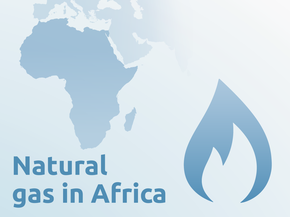Assumptions
Historical emissions
Nigeria’s NDC update provided revised historical emissions for 2010 and 2018 using AR5 global warming potentials (GWPs) (Federal Government of Nigeria, 2021). We converted 2018 emissions to AR4 using sector-by-sector gas shares from PRIMAP. Land use was excluded using the AFOLU sub-sector breakdown provided for 2018 in the update.
The NDC update notes that the significant jump observed in emissions between 2017 and 2018 depicted in Nigeria’s sector-by-sector bar chart of historical emissions is due to differences in data sources for the energy sector for those years. We have used PRIMAP sector growth rates to extend the historic time series, rather than the data provided in the NDC until 2010, as it is likely a more accurate depiction of the year over year change.
2020 historical emissions estimate
We used different methods, depending on the sector, to estimate emissions in 2019 and 2020. We used growth rates in CO2 emissions from the Global Carbon Budget as proxies for all energy sector emissions (Global Carbon Project, 2020). Over 90% of Nigeria’s CO2 emissions are from the energy sector. We assumed that other gases would be reduced in the same proportion as CO2 emissions. We used GDP growth rates from the IMF to estimate industry emissions. We assumed the continuation of a five-year historic trend for both agriculture and waste.
NDC and other targets
Nigeria’s final NDC update uses global warming potentials (GWP) values from the IPCC’s fifth assessment report (AR5). CAT uses GWP values from the fourth assessment report (AR4) to ensure comparability across countries.
The NDC provides a sector-by-sector breakdown of emissions in 2018 and 2030. We have converted from AR5 to AR4 using the gas-by-gas breakdown for each sector from PRIMAP for the year 2018. We have not converted HFCs as we do not have information on individual gases; however, these gases represent only 1 MtCO2e in 2018.
The final NDC update provides LULUCF emissions for 2018 and AFOLU emissions for the 2030 BAU. To estimate LULUCF emissions in the 2030 BAU, we applied the same ratio of LULUCF/AFOLU as in 2018.
The update provides no information on the extent to which Nigeria intends to rely on reducing land sector emissions to meet its NDC targets. However, the update does estimate the potential of nature-based solutions as about 115 MtCO2e. Of these solutions, the top three are identified as agroforestry, improved forest management, and forest restoration, making up about 89 MtCO2e of the total potential. We use the 89 MtCO2e estimate as the upper bound of our estimate for the contribution of the land sector in meeting Nigeria’s conditional target (and a proportional share of the 89 MtCO2e estimate for the unconditional target). We assume this estimate is all CO2 and thus no need to convert from AR5 values.
For the lower bound, we assume the land sector contributes an equal share as remaining sectors for both targets.
The Third National Communication identified significant abatement potential in the land sector, though its estimation of land sector emissions may have been higher than what is now reported in the final NDC update. Overall, there is significant uncertainty in the land sector emissions and our estimates are best guesses based on the available data.
Gas coverage
Analysis of the NDC covers the 4 gases included in Nigeria’s NDC target. Our assessment of historic emissions and current policies also includes PFCs and SF6, which were around 1 Mt in 2018.
Current policy projections
We derive our current policy projections from a combination of the Stated Policies Scenario and Africa Case Scenario from IEA’s Africa Energy Outlook 2019 for energy emissions and from the US EPA for agriculture, waste and industry emissions (IEA, 2019; US EPA, 2019). In general, the IEA Africa Energy Outlook 2019 report does not specify which of the policies have been included in the stated policies scenario.
The IEA’s Stated Policies Scenario was used to derive our lower bound projections for energy CO2 emissions. This scenario assumes development of coal-fired generation in Nigeria; however, all recent coal plant projects have either been cancelled or shelved. Therefore, we have adjusted our lower bound to assume the coal generation in Stated Policies Scenario is met with renewable energy, in line with national targets. Similarly, the Africa Case Scenario, which is used to derive the upper bound of our current policy range, was adjusted to assume projected coal generation is instead met with natural gas. In our lower bound, projections for energy CH4 and N2O are extended using recent historical trends, while our upper bound extends these emissions at the same rate as CO2, assuming increases in oil and gas production outweigh reductions in fugitive emissions from reduced gas flaring.
We have adjusted these energy emission projections to take into consideration the impact of the pandemic. We distilled the emission intensity (GHG emissions/GDP) from the pre-pandemic IEA scenarios starting in 2018. This emission intensity estimate was then applied to the most recent GDP projections from the IMF for Nigeria that take into account the effect of the pandemic (IMF, 2021). This estimates GDP growth to be -1.8% in 2020 with a rebound of 2.5% in 2021 and slightly lower growth from 2022 to 2026. As these estimates only cover 2020 to 2026, we used the average GDP growth projected by the IMF for 2021-2026 to extend the projections until 2030. Results were then harmonised to our 2020 estimate (see Historical emissions above).
Global warming potentials
The CAT uses Global Warming Potential (GWP) values from the IPCC's Fourth Assessment Report (AR4) for all its figures and time series. Assessments completed prior to December 2018 (COP24) used GWP values from the Second Assessment Report (SAR).
Further analysis
Country-related publications
Stay informed
Subscribe to our newsletter

